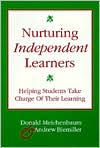We as teachers, see all kinds of students come through our doors each year. Whether well-mannered or unruly, inquisitive or shy, initiator or observer, we can't help but become invested in our students. The population of students in my school is so diverse that it can be very overwhelming and heart-breaking to hear what some of these young adults have gone through just to get where they are now today.
One student in particular who entered my class last year, came from a difficult home life. One in which I have never encountered throughout my teaching career. She was very willing to tell her side of the story which was compelling but jaw-dropping at the same time. She presented herself with a tough exterior but I quickly realized that she was nothing but a teddy bear inside. This student has experienced more negativity in her life and has hit rock bottom all too often only to find herself still trying to get back up.
Teachers today are expected to wear many hats. Not only are we teaching but we are there for our students sometimes as a facilitator, nurse, coach, mentor, counselor, and many times a therapist. How do we not get so invested in our students? Where do we draw the line? And how do we find that balance between teacher and student and still wanting to be that one positive adult role-model in their lives?
